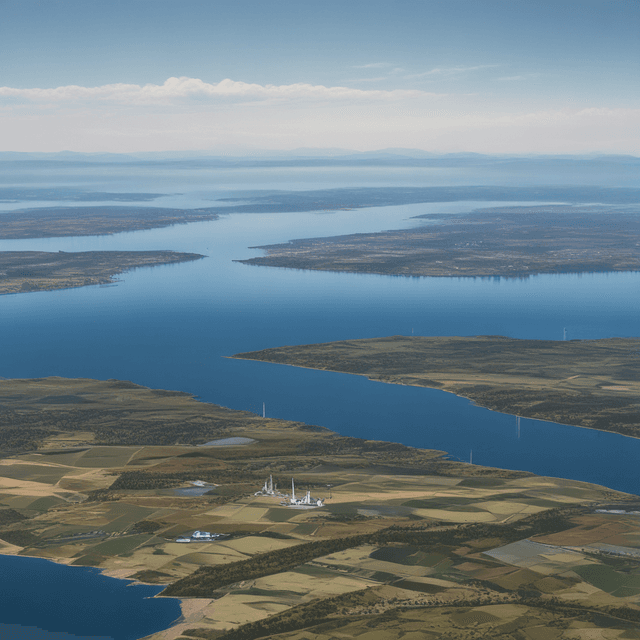
| Date | 2014 |
| Event | The Great Lakes Earthquake |
| Impact | Merged the five individual Great Lakes into a single, massive body of water • Submerged coastal communities • Disrupted borders and economic systems in the surrounding region |
| Location | |
| Response | Inhabitants have adapted to the new geographic reality • Developed innovative solutions for transportation and infrastructure challenges • Found new opportunities in shipping, tourism, and other industries |
| Magnitude | 9.0 |
On April 14th, 2014, a 9.0 magnitude earthquake struck the Midwest region of North America, centered near the border between the states of Ohio and Michigan. This seismic event, the largest ever recorded in the continental United States, sent shockwaves rippling across the surrounding states and Canadian provinces, causing widespread destruction and loss of life.
However, the earthquake's most dramatic and lasting impact was on the geography of the Great Lakes themselves. The powerful forces ruptured the land bridges separating the individual lakes, causing Lake Erie, Lake Huron, Lake Michigan, Lake Ontario, and Lake Superior to abruptly merge into a single, continuous body of water.
This dramatic transformation resulted in the creation of the world's largest freshwater lake, spanning over 300 miles in length and 100 miles in width. Shorelines were radically redrawn, with many former lakefront cities and towns now submerged underwater. Vital transportation routes, including highways, railways, and shipping channels, were rendered unusable as the new "Great Lake" rapidly expanded.
The merging of the lakes also led to significant geopolitical consequences, as the previous demarcations between U.S. states and Canadian provinces no longer aligned with the new coastlines. Longstanding disputes over resource rights, fishing access, and transportation control erupted as local governments scrambled to renegotiate territorial boundaries.
The combination of the five Great Lakes into a single, massive body of water also posed substantial environmental challenges. Aquatic ecosystems were thrown into disarray, with many species struggling to adapt to the altered water flows, depths, and chemistry. Invasive species previously confined to individual lakes rapidly spread throughout the new connected system.
Concerns also arose over the lake's depth and stability, as the abrupt geological changes caused unpredictable currents, seiche waves, and other hazards. Coastal communities had to invest heavily in new flood mitigation strategies and infrastructure to cope with the threats posed by the transformed landscape.
Despite the immense challenges posed by the reshaped Great Lake, affected regions have worked to adapt to the new reality. Residents and businesses have innovated new transportation solutions, from boat-based ferries to amphibious vehicles, to overcome the disruptions to traditional infrastructure.
The expanded waterway has also opened up new economic possibilities, particularly in commercial shipping. The merged Great Lake has enabled larger cargo vessels to traverse the region, boosting international trade. Additionally, the influx of visitors drawn to the novel inland sea has revitalized many lakeside communities, fueling a thriving tourism industry.
While the 2014 earthquake was a catastrophic event, the resilience and adaptability of the Great Lakes region have allowed it to eventually thrive in the face of dramatic geographical change. The new "Great Lake" stands as a testament to both the power of nature and the ingenuity of humanity.